At sea, the line between war and peace has always been thinner than on land, a fact nowhere better illustrated than the waters off Iceland in the middle years of the 20th century. British fishermen had been taking advantage of the rich fisheries off Iceland since the late Middle Ages, and had found themselves in conflict with the rulers of Iceland (Denmark up until WWII) over where they could fish for almost as long. Throughout the 19th and early 20th centuries, Denmark repeatedly tried to expand their control over the waters around Iceland past the 3 mile limit, while Britain, driven by the importance of their fishing fleet, successfully pushed back.
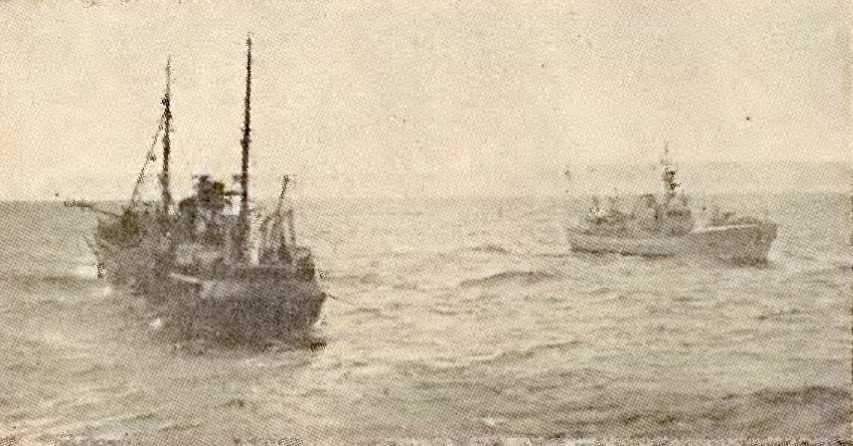
Things began to change in the postwar world. Iceland, newly independent, was more willing to go to the mat over the issue, while Britain was no longer the world's leading superpower. The first clash came in 1952, when Iceland attempted to expand its control over offshore fishing from 3 miles to 4. The British responded by prohibiting the Icelandic fishing fleet from landing its catch in Britain, its largest export market. The Soviets, seeking power in the growing conflict with the West, stepped in to buy the Icelandic fish, a move the US countered by entering the market for Icelandic fish and bringing Italy and Spain in as well. This essentially nullified the British embargo, and by 1956, Iceland had won a clean extension of its control.
But the Icelanders were not satisfied with the 4-mile limit, and in 1958, they passed a law to extend it to 12 miles despite opposition from the entirety of Western Europe. This time, the British decided to respond not with boycotts but by sending the RN to do the most basic of naval functions, ensuring that one's ships can operate even where someone else would rather they didn't. But they would not do this in the traditional way, because while it would have taken the RN about 10 minutes to annihilate the 5 gunboats of the Icelandic Coast Guard, doing that to a fellow NATO member would have caused some diplomatic problems. Instead, this operation, dubbed the "Cod War" after one of the major fish in question, would involve the Icelanders trying to arrest British trawlers, while the RN did its best to stop them without actually breaking anything.
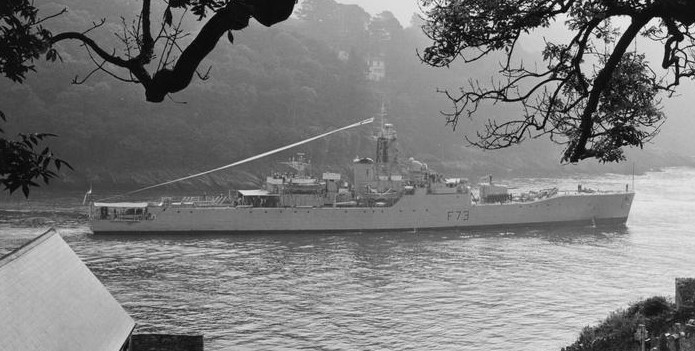
HMS Eastbourne
In the first days of the confrontation, the Icelanders managed to arrest one British trawler, but before their boarding party could take it in to port, the frigate Eastbourne arrived. A British boarding party was promptly sent over to recover the trawler, and the Icelandic party was sent ashore in a boat. Soon after, gunboat Aegir rammed several trawlers, then attempted to ram HMS Russell when the British frigate intervened. The British responded by threatening to open fire, and the Icelandic ship backed off, but clashes were frequent enough that the RN squadron had to be reinforced. Over the first four months of the Cod War, the RN rotated a total of 22 warships and 5 RFA tankers through the waters off Iceland. There, they faced an increasingly aggressive Icelandic Coast Guard, whose ships routinely fired warning shots at trawlers, and in a few cases even fired solid shot at the masts, in an attempt to knock out radios before the RN could be summoned. In fairness, the British trawlers were equally eager for action, and on a number of occasions attempted to ram the Icelandic ships. Astonishingly, despite the frequent clashes at close range, nobody was killed, and the only ship seriously damaged during this period was trawler Red Crusader, hit three times by solid shot from a Danish frigate during a related clash south of the Faeroe Islands. The resulting flooding was contained with the help of responding warships, which escorted the trawler back to Aberdeen. Finally, after 30 months of operations in the North Atlantic, the British government agreed to accept the new limits, although with some fishing rights in the disputed zones the next three years, and brought the first Cod War to an end.
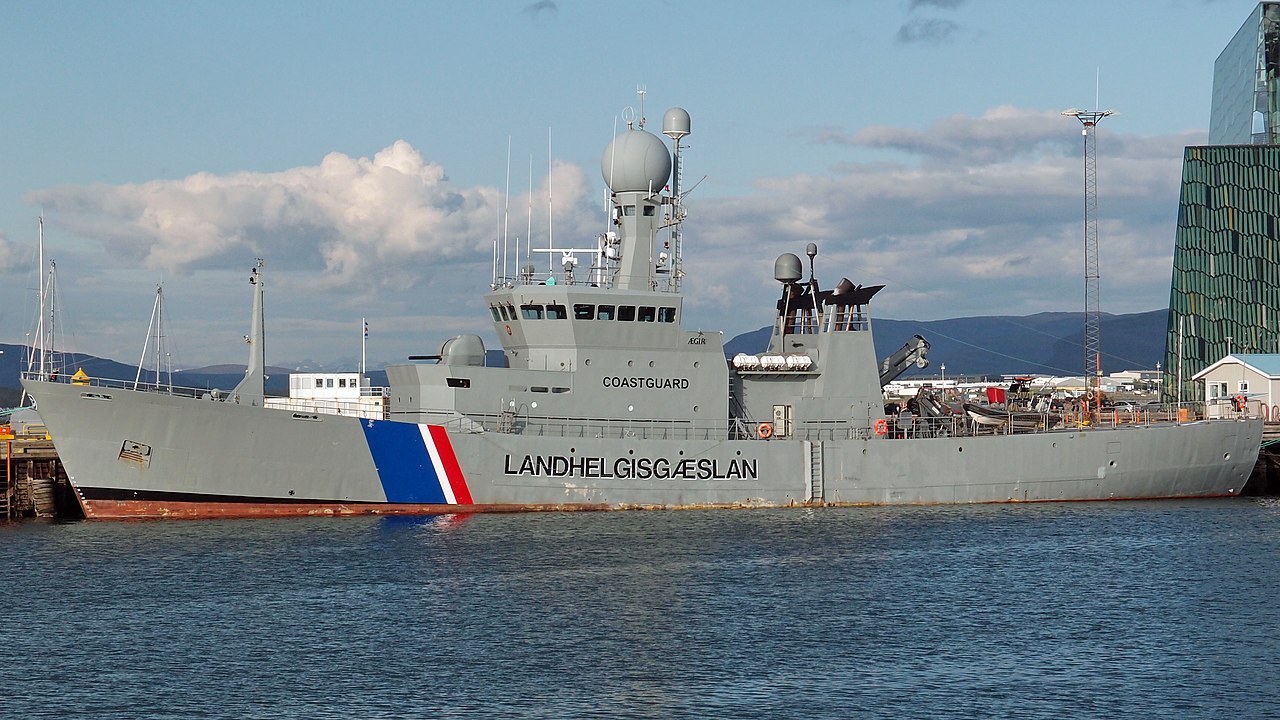
Aegir
Things remained quiet for the next decade, but in September 1972, Iceland again decided to expand its fishing rights, this time to 50 miles, a radius that would cover the richest fishing grounds in the area. The British again refused to recognize the expansion, although they hesitated to send in the RN for diplomatic reasons, preferring instead to charter big tugs, which they hoped would come off better in the ramming contests that had characterized the first Cod War. They faced a new weapon, a device that the Icelandic Coast Guard had developed to cut the nets of trawlers during the first round, but hadn't previously deployed. It turned out to be quite effective, and despite the best efforts of the chartered tugs, so many nets were cut that by May the trawlers were refusing to enter the disputed waters without close protection from warships. Whitehall agreed, and ordered the RN in. Tensions rapidly escalated, with gunboat Aegir firing shells into the hull of trawler Everton, which was saved from sinking by the intervention of salvage parties from frigate Jupiter. Collisions and tension mounted from June onward, and at one point HMS Leopard even informed Aegir that if they opened fire with their 57mm gun, Leopard would reply with her 4.5".
By the end of August, Icelandic claims that the British had adopted ramming as a deliberate policy and the death of a crewman aboard Aegir after a collision with Apollo had taken the smaller country to play their trump card, threatening to break off diplomatic relations with Britain. The danger to Atlantic security was obvious, and the British pulled their ships out of the disputed zone. By November, an agreement was signed allowing the British limited access for two years, but recognizing Icelandic control out to 50 miles.
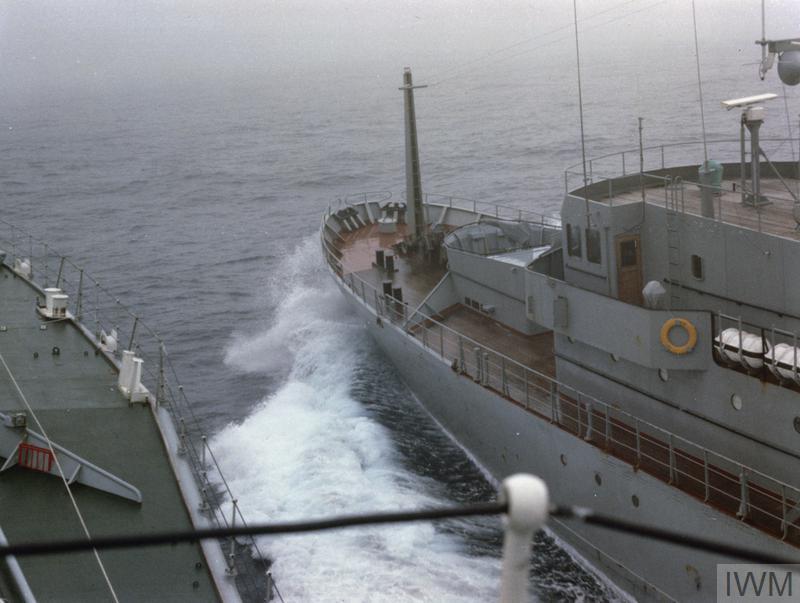
Odin and Scylla maneuver together
Even before the agreement expired, Iceland once again expanded their area of control, claiming rights out to 200 miles in October 1975, although the British were allowed to keep fishing until the agreement expired in November. The British, apparently still smarting from their last defeat, sent in tugs and warships almost immediately, and the conflict resumed more or less where it had stopped two years earlier. Within days, numerous nets had been cut, and gunboat Thor again threatened to open fire on British ships after a collision, only to be reminded by HMS Brighton that that would be a terminally unwise thing to do. Thor continued to be particularly belligerent, and was forced out of action by collision damage in early January. NATO did its best to help find a diplomatic solution, but the first months of 1976 saw the battles off Iceland reach new heights. In total, the Third Cod War saw over 50 collisions, some of which did significant damage to the ships involved. Frigate Diomede sustained a 12' gash in a tussle with Baldur, fortunately well above the waterline.
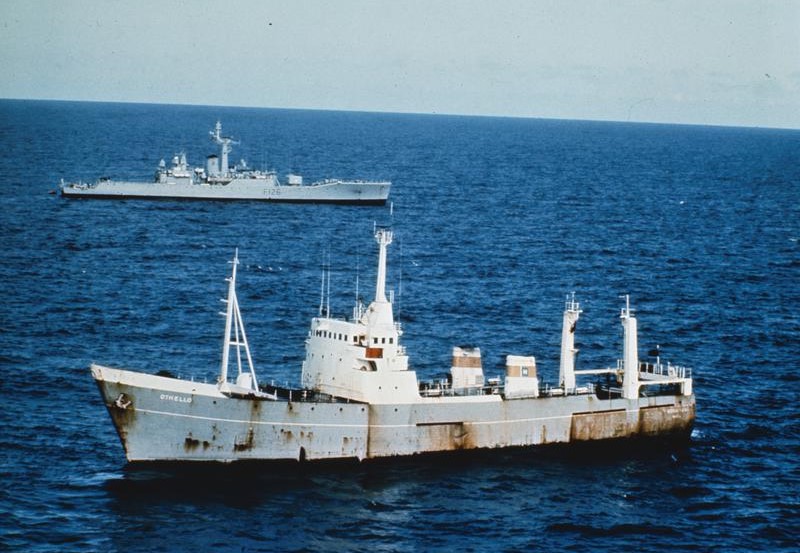
HMS Plymouth guards a trawler
As the conflict dragged on, Iceland once again proved willing to go to the mat, cutting off diplomatic relations with Britain and threatening to withdraw from NATO and close the vital base at Keflavik. This, combined with the cost of the deployment, the strain it placed on the RN's frigate force and Britain's desire for a 200-mile exclusion zone of its own, finally led Britain to throw in the towel at the end of May. The Third Cod War had been the most heated of the three conflicts, with about 50 collisions, some of them quite serious. Of the 21 frigates deployed, 15 had come home damaged, some requiring serious yard time. Two older frigates had even been pulled out of reserve and fitted with wooden protection to reduce damage from collisions, and although the conflict had ended before they saw action, they were briefly retained in service to fill the gaps left by the more badly damaged ships. One major reason for the extent of the damage were the thin hulls of most British warships, designed to be resistant to nuclear shock, and the experience of the Cod War was one of the drivers of thicker hulls on modern warships.
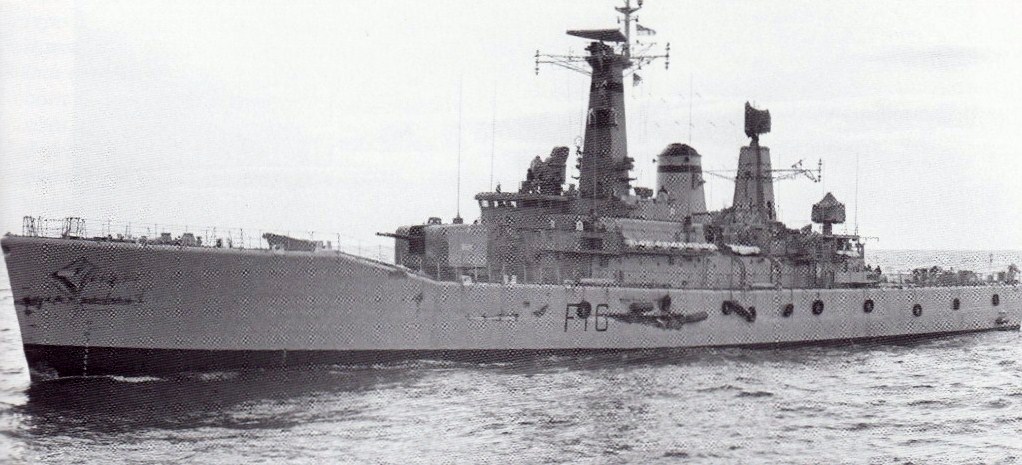
HMS Diomede shows her wounds
Ultimately, the issues that drove the Cod Wars were resolved in 1982 by the adoption of the 200 mile EEZ. But I suspect that their implications continue today. Not just in ship structure, but also in how we look at naval power. The RN found itself using the latest anti-submarine frigates as ramming vessels, and I would not be surprised if the Cod War is at least partially responsible for the rise in OPVs and other low-end warships over the last half-century. In any case, it's a fascinating look at the most basic form of seapower, and a good case study of how weird international relations can get.

Comments
To be very picky, Britain was never a superpower. At the height of her glory she was a the greatest of the Great Powers.
Is solid shot something most ships carry or would they order it specially for these types of conflicts?
I believe a few rounds are standard for "shot across the bow" purposes, and it's plausible that Iceland carried more than would be normal given what they were planning to do.
"No peace out of sight of land" was the motto of my Troll Republic for eight centuries, until it all ended in The Dang War.
Surely, at some point, someone suggested equipping trawlers with concealed guns, as Q-ships?
I think giving British trawlermen the ability to return fire could have resulted in an unacceptable risk of escalation. Q-ships were intended to actually sink the submarines!
@DampOctopus
What Alexander said. Shooting at a country's warships is very serious business, and it had better be extremely clear that they were in the wrong before you do it. That would not be the case here, and sending in armed trawlers would have a decent chance of driving Iceland into the Warsaw Pact.
So, the next Icelandic Coast Guard Cutter should be named Tegetthoff's Revenge or Camperdown?
Flip side of "At sea, the line between war and peace has always been thinner than on land" is that The Customary Laws Of War At Sea have always been more firm about a warship rendering aid to distressed mariners after that warship is done distressing the mariners in question that the equivalent customs on land.
Hence the geopolitical issues about Unrestricted Submarine Warfare in the Great Wars.
@ Ian maybe "Resolute" would be a more current reference, and it has a good ring to it Ü https://en.wikipedia.org/wiki/Heritage_Adventurer
When I was reading about the creation/expansion of the EEZ from 3 miles to 200 over a few decades, I was wondering what would happen if they had kept growing at that rate until there were no more international waters. Whose fishing fleets would be in trouble, and which countries would be issuing lots of expensive licences to fish in their expanded EEZs?
@ Alexander - Both Konteradmiral Tegetthoff and HMS Camperdown have extensive history at Naval Gazing, especially concerning ramming.
Very true, and that was what let me know you were suggesting names with that sort of history. But I proposed Resolute as (perhaps once translated to Icelandic?) it sounds less British/Austrian, so might be a better fit for Iceland. All fine suggestions though, and maybe they need multiple boats with ice hardened bows...
Most naval guns have a type of ammunition called "BL&P (blind loaded and plugged). It's real purpose is to be used for training and target practice (especially for calibrating your gun). But it has no explosive so if one needed to shoot something without a detonation, BL&P would be your choice.